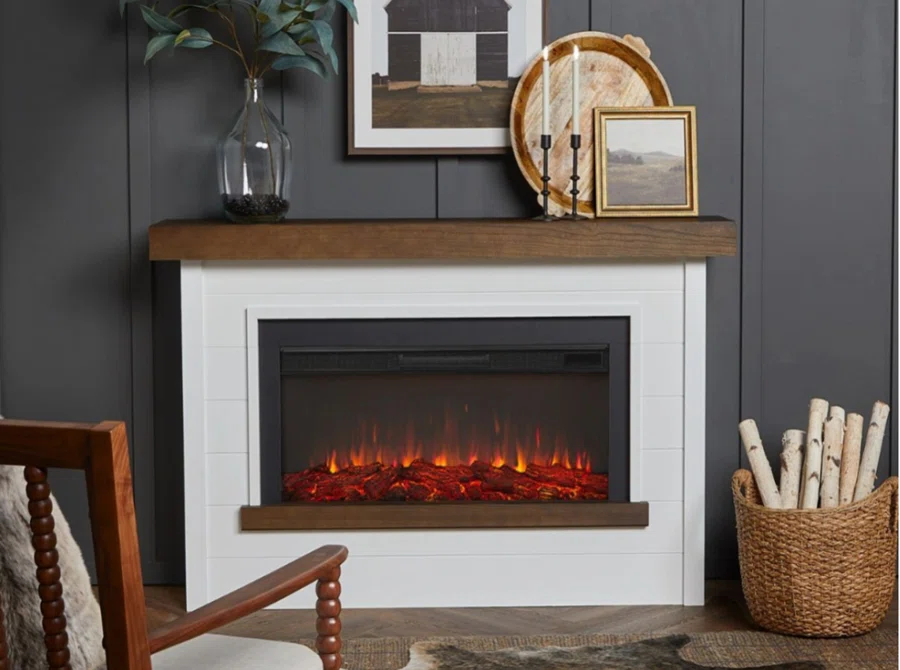Vent-free fireplaces are a revolutionary hearth innovation that eliminates the need for external venting. These appliances operate with nearly 100% combustion efficiency, making them a popular choice for many homeowners. However, their convenience has sparked debates about safety and air quality. This article dives into the science, concerns, and safety measures surrounding vent-free fireplaces to help you make an informed decision.
Common Complaints About Vent-Free Fireplaces
Over the last two decades, vent-free fireplaces have surged in popularity. However, this rise was accompanied by reports of:
- Soot Deposits: Stains on walls, ceilings, and upholstery.
- Excess Humidity: Condensation on windows and mold growth.
- Health Symptoms: Burning eyes, itchy throats, sinus problems, headaches, and even respiratory issues.
In extreme cases, users have reported dizziness, fatigue, or more severe health effects like heart and lung damage.
Understanding the Concerns
The primary issues with vent-free fireplaces fall into two categories:
- Indoor Air Quality (IAQ): Pollutants like particles and gases can affect health, especially with prolonged exposure.
- Property Damage: Excess soot and moisture can harm walls, furniture, and floors, leading to costly repairs.
Indoor Air Quality: What Are the Risks?
Our air is a mixture of oxygen (21%), nitrogen (78%), and trace gases. Pollutants from vent-free appliances—though minimal—can impact IAQ.
Particles
- Coarse Particles: Include dust, mold spores, and pet dander, which can irritate the lungs.
- Fine Particles: Smaller particles from combustion can decrease lung capacity.
- Ultrafine Particles: These may bypass lung defenses and enter the bloodstream.
Gases
- Carbon Monoxide (CO): A silent killer that causes dizziness, nausea, and in severe cases, death.
- Nitrogen Oxides (NOx): Can irritate the lungs and exacerbate respiratory conditions.
- Carbon Dioxide (CO2): Though harmless in low concentrations, excess levels can cause fatigue.
- Volatile Organic Compounds (VOCs): Emitted from household materials, they may trigger allergies or more severe health effects.
Property Damage Risks
Vent-free fireplaces can produce:
- Soot Staining: Affects mantels, ceilings, and even clothing.
- Mold Growth: Excess humidity creates ideal conditions for mold, especially in hidden areas.
How Vent-Free Fireplaces Work
Vent-free appliances rely on complete combustion of fuel (natural gas or propane), producing water vapor and CO2 as primary byproducts. Safety features like Oxygen Depletion Sensors (ODS) shut off the system if oxygen levels drop, ensuring safer operation.
Complete vs. Incomplete Combustion
- Complete Combustion: Produces CO2 and water vapor.
- Incomplete Combustion: Generates harmful byproducts like CO and NOx.
Testing and Standards
Extensive tests confirm vent-free fireplaces meet stringent safety standards, including:
- CO and NOx Levels: Remain well below thresholds set by the Consumer Product Safety Commission (CPSC).
- Humidity and Mold Risk: Controlled when used as directed.
Mitigation and Maintenance
To ensure safe operation:
- Professional Installation: Appliances must comply with ANSI Z21.11.2 standards and local codes.
- Regular Maintenance: Schedule annual inspections to maintain efficiency and prevent buildup of debris.
- Ventilation: Ensure adequate airflow to dilute pollutants.
- CO Detectors: Monitor air quality to prevent potential risks.
Expert Opinions
While the hearth industry supports vent-free fireplaces for their efficiency and safety, organizations like the EPA and American Lung Association advise caution, particularly for sensitive individuals.
Conclusion
Vent-free fireplaces offer an efficient and convenient heating solution when installed and maintained properly. Awareness of their limitations and adherence to safety guidelines ensure a warm and safe experience for homeowners.

